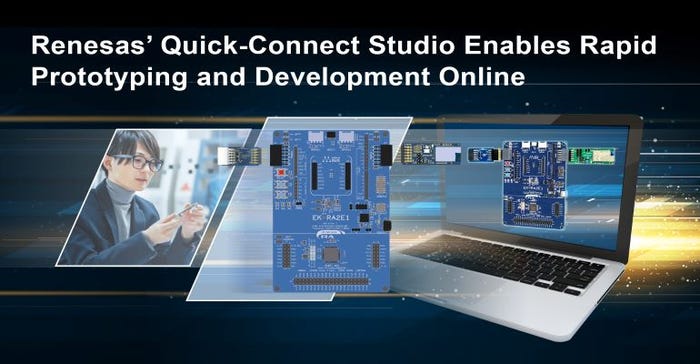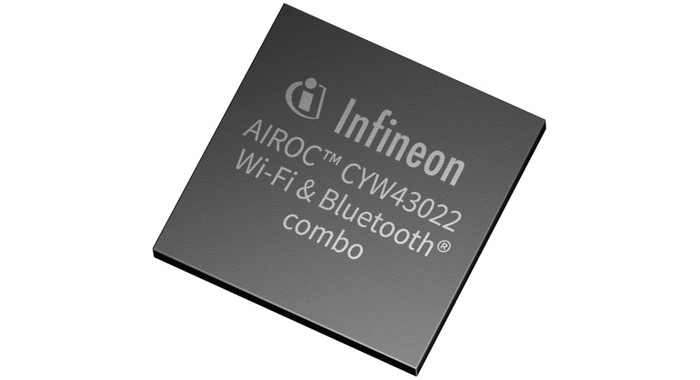Design tools, boards and modules, wireless tech, and processors for myriad design challenges are showcased at industry’s leading embedded technology event in Nuremberg, Germany.

Embedded technologies are found in everything from appliances to vehicles to military systems, and their importance continues to grow as more specialized solutions are being sought for increasingly complex electronics systems. The annual Embedded World Exhibition and Conference in Nuremberg, Germany, taking place March 14 through 16, will highlight the latest innovations in hardware, software, displays, embedded vision, IC and IP design, safety and security, and more.
Embedded World, organized by NürnbergMesse GmbH, started in 2003 with two halls and more than 350 exhibitors. Reflecting the dramatic growth in embedded technologies over the past two decades, the show last year had over 720 exhibitors and attracted over 18,000 visitors, rebounding after COVID-19 shut down the show in 2020 and 2021.
Some of the numerous product introductions at Embedded World follow below. The Embedded World site has complete details on the show.
Speeding Prototyping
Not surprisingly, a major concern among embedded systems designers are tools that enable design engineers to speed time-to-market as product designs get more complex while time-to-market pressures increase. Toward this end, Renesas Electronics has introduced its Quick-Connect Studio, an online, cloud-based IoT system design platform that enables users to graphically build hardware and software to quickly validate prototypes and accelerate product development.
Quick-Connect Studio enables engineers to save time and reduce risk in product designs prior to committing to hardware layout. “This tool is designed for fast prototyping and leverages cloud computing resources for fast compilation,” said Brad Rex, Director of Systems and Solutions for Renesas Electronics, in a recent interview with Design News. The platform dynamically reconfigures software code and provides a drag-and-drop environment that enables design engineers to quickly reconfigure and test product designs. “Because it operates in the cloud, it enables designers to configure product designs without having to install software,” Rex added.

Machine Learning Processor
Renesas Quick-Connect Studio interfaces with the company’s Quick-Connect IoT Platform, which provides standard hardware and software building blocks to enable quick prototyping of IoT systems. Aspinity has released its AB2 AML100 Application Board which will be shown at Embedded World. The board expedites the development of power-constrained always-on AI products that use the AML100 analog machine learning processor and Renesas’ Quick-Connect IoT platform or other development platforms with an Arduino Uno Rev3 connector.
The near-zero power AML100 analog machine learning processor has been developed using Aspinity’s analogML™ core and consumes 15µA for sensor interfacing, signal processing, and decision making completely within the analog domain. When programmed with one of Aspinity’s purpose-built event detection algorithms, the AB2 allows system designers to quickly implement the AML100 as a front-end analog event detector that keeps the Renesas MCU in its lowest power state unless the sensor event of interest is detected, and further processing is required. By keeping the MCU in sleep mode for most of the time, the AML100 enables system designers to leverage the features and functionality of their favorite high-performance Renesas.

Embedded Vision
Embedded vision advancements will also be in abundance at Embedded World. ARIES Embedded will show embedded modules based on Microchip’s PolarFire® SoC architecture and various system-in-packages according to the versatile OSM standard.
The platforms, designated the M100PF and M100PFS, provide power-efficient computation for smart embedded vision, industrial automation, communications, and IoT. The M100PF SoM family implements the PolarFire FPGA and spans from 100K logic elements (LEs) to 300K LEs. It features 12.7G transceivers and offers up to 50 percent lower power than competing mid-range FPGAs. The M100PFS SoM integrates a hardened real-time, Linux capable, RISC-V-based MPU subsystem on the mid-range PolarFire SoC-FPGA family, bringing low power consumption, thermal efficiency, and defense grade security to embedded systems.
Child Presence Detection
Wireless and sensing technologies are also sharing the Embedded World spotlight. CEVA, Inc. which licenses wireless connectivity and smart sensing technologies and co-creation solutions, has announced that its RivieraWaves™ ultra-wideband (UWB) IP has been extended to support UWB-Radar for Child Presence Detection (CPD) as specified by Euro-NCAP and similar specifications in other regions.
Child Presence Detection is a safety system designed to detect and alert if a child or pet is accidently left behind in the vehicle. In Europe, Euro NCAP is actively promoting CPD through its safety rating metrics. In China, CNCAP is similarly promoting CPD and in the U.S. the Hot Cars Act has passed, and the NHTSA is reviewing CPD guidance. In-cabin radar based on UWB is proving to be an excellent technology solution for presence sensing, capable of detecting even micro movements right down to breathing rate.
Using UWB radar sensors rather than alternative camera-based sensors also addresses the privacy concerns of in-cabin sensing systems, as well as supports low-light operation. Furthermore, by reusing the Secure Digital Key UWB anchor points which are increasingly common in automobiles, UWB-based CPD can be economically deployed across the automotive market spectrum, from premium to budget.
The CEVA UWB Radar solution is an add-on software package to the CEVA RivieraWaves UWB PHY and MAC IP. The solution delivers robust Breath Per Minute (bpm) detection for CPD with less than 1bpm resolution, exceeding the Euro NCAP requirements. Leveraging a coherent demodulation architecture and advanced ranging algorithms, the CEVA RivieraWaves UWB with Radar delivers excellent distance and angle measurements in the complex in-cabin environment, enabling gesture recognition and intruder alarm features. The solution can be optimized for different environments, including a configurable number of antennas. Designed for coexistence with the Car Connectivity Consortium® (CCC) Digital Key, the solution permits reuse of Digital Key UWB anchor hardware.

Among other wireless products on display at Embedded World, Infineon is showing its AIROC™ CYW43022 ultra-low power, dual-band Wi-Fi 5 and Bluetooth® combo. The CYW43022 ultra-low power architecture delivers industry-leading performance, with up to a 65 percent reduction in power usage during “deep sleep,” significantly extending battery life for applications such as smart locks, smart wearables, IP cameras and thermostats.
The Infineon AIROC CYW43022 ultra-low power, dual-band Wi-Fi 5 and Bluetooth 5.3 combo includes Wi-Fi network offloads and an embedded Bluetooth stack reducing power demands on host processors. To support designs with smaller antennas or designs that require longer reach, the combo includes a Class 1 Bluetooth PA with +18 dBm transmit power. Secure boot with firmware image authentication requiring signed Infineon firmware protects against hacker attacks.
Also in Bluetooth technology, ON Semiconductor will show its s low-power Bluetooth Low Energy (Bluetooth LE) solution for the automotive market. The AEC-Q100 qualified device is ideal for tire monitoring and vehicle access applications. The solution features the latest in embedded security and helps vehicle manufacturers looking to implement wireless connectivity to reduce the cost and weight of cabling associated with vehicle sensing and communications.

Memory for Vehicles
With the growth of high-speed computing and electric and autonomous vehicles, the need increases for memory that can keep pace with high system bandwidths and faster read-write cycles. At Embedded World, Everspin Technologies is showing its EMxxLX STT-MRAM devices – the industry’s first xSPI serial interface persistent memory based on Everspin’s industrial STT MRAM technology.
The memory offers densities up to 64Mb, an octal interface with 400MB/s bandwidth, and is compatible with the xSPI standard. The MRAM devices aim at applications requiring fast read-write cycles as well as constant software updating, according to Joe O’Hare, Director of Marketing for Everspin, in an interview with Design News.
O’Hare expects the EmxxLX STT-MRAM to find applications in industrial programmable logic controllers, process and factory automation, and even Smart City and Smart Grid applications. He also foresees the MRAM being designed into embedded memory applications with FPGAs.
Edge Computing
Among edge computing products at Embedded World, Nuvoton will show its MA35D1 microprocessor, which empowers edge computing object detection and recognition using the deep learning MobileNet-SSD model. This system runs TensorFlow Lite on Linux, can display real-time inference results on a screen, and supports image sensors such as USB cameras and parallel RGB CMOS. The system has an inference rate of 20 FPS @60x60 image resolution, and the MobileNet-SSD and other popular models can be used in the Nuvoton NuEdgeWise™ embedded edge AI creator IDE tool.
In addition, this product provides a user-friendly, integrated machine learning development flow, from model training on a PC to deployment on Nuvoton edge devices.
Spencer Chin is a Senior Editor for Design News covering the electronics beat. He has many years of experience covering developments in components, semiconductors, subsystems, power, and other facets of electronics from both a business/supply-chain and technology perspective. He can be reached at [email protected].
About the Author(s)
You May Also Like





